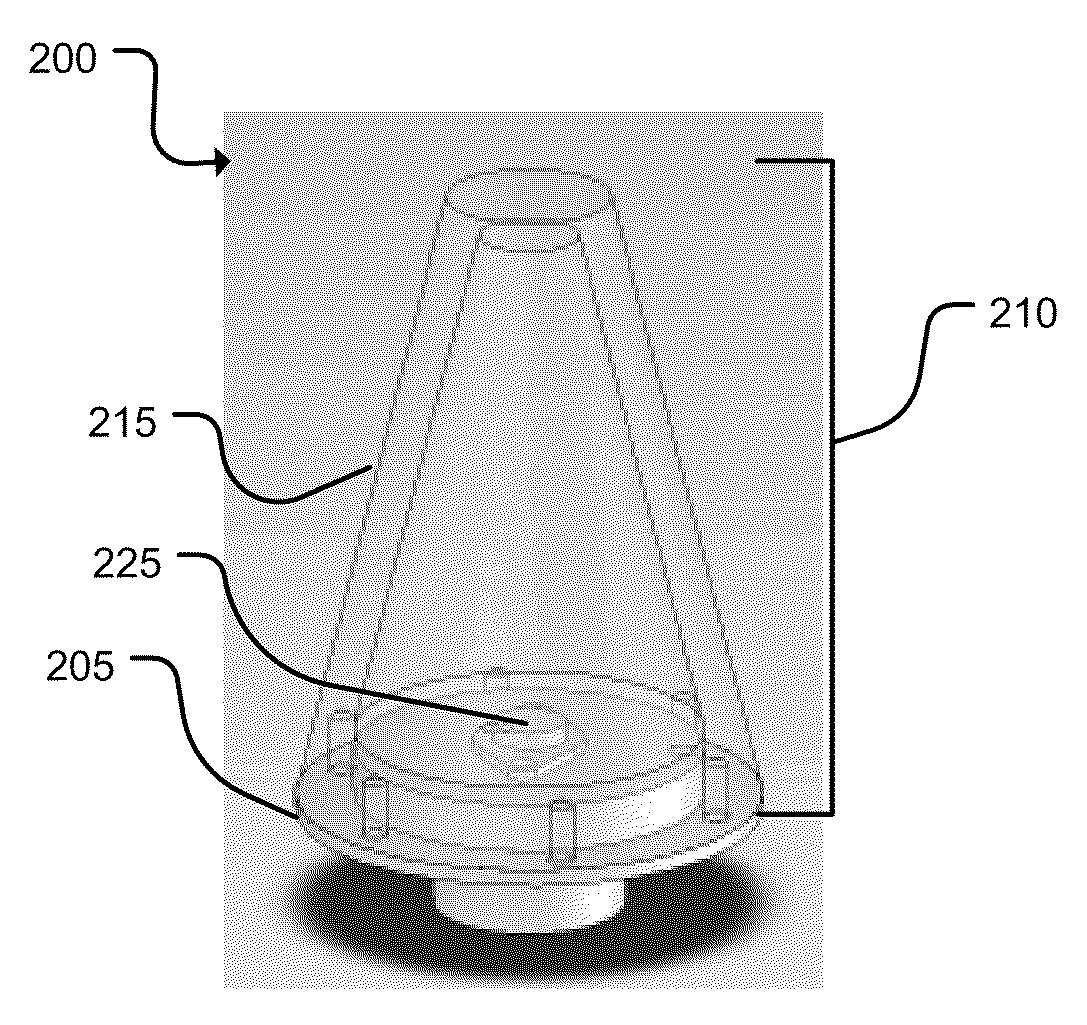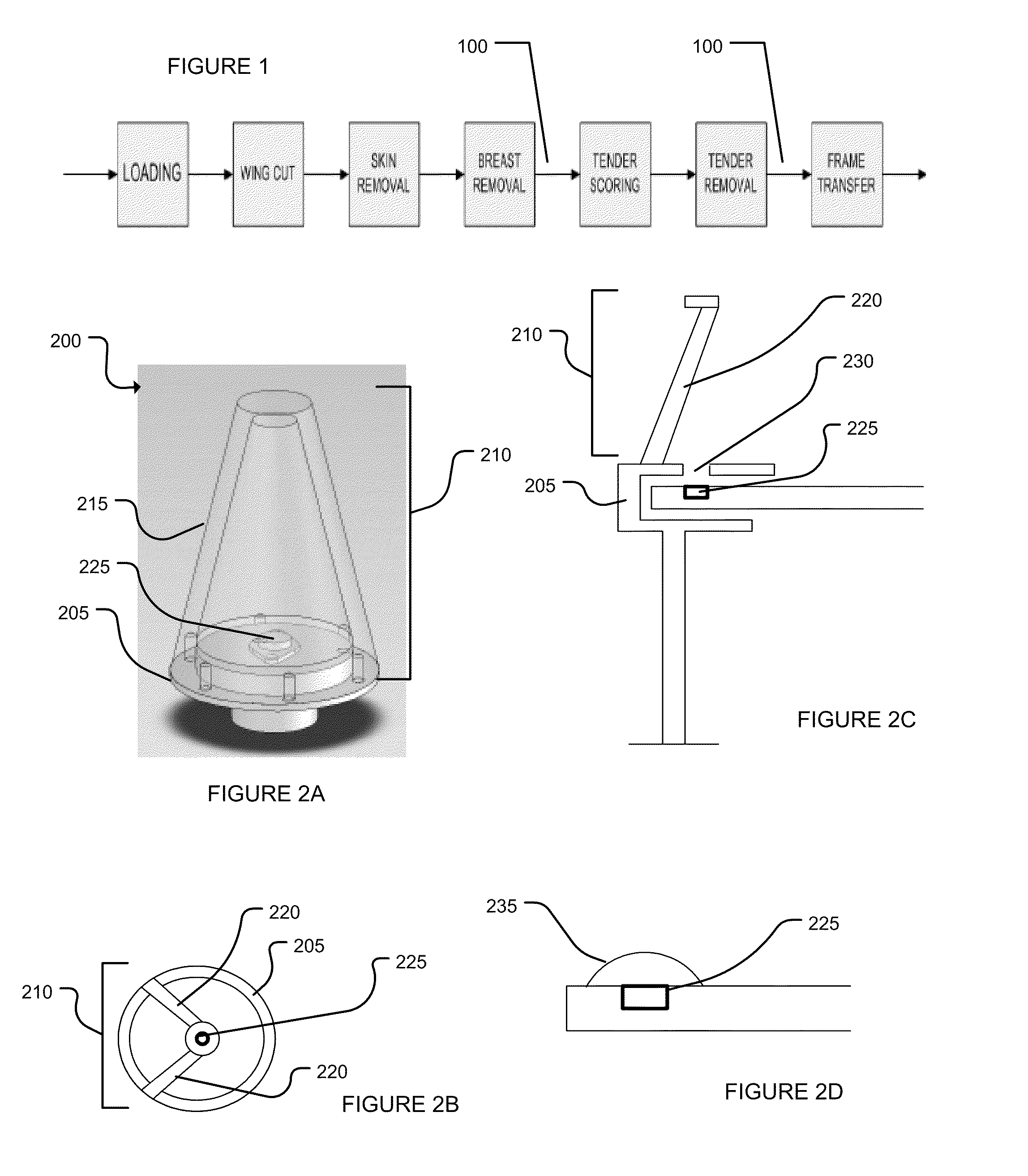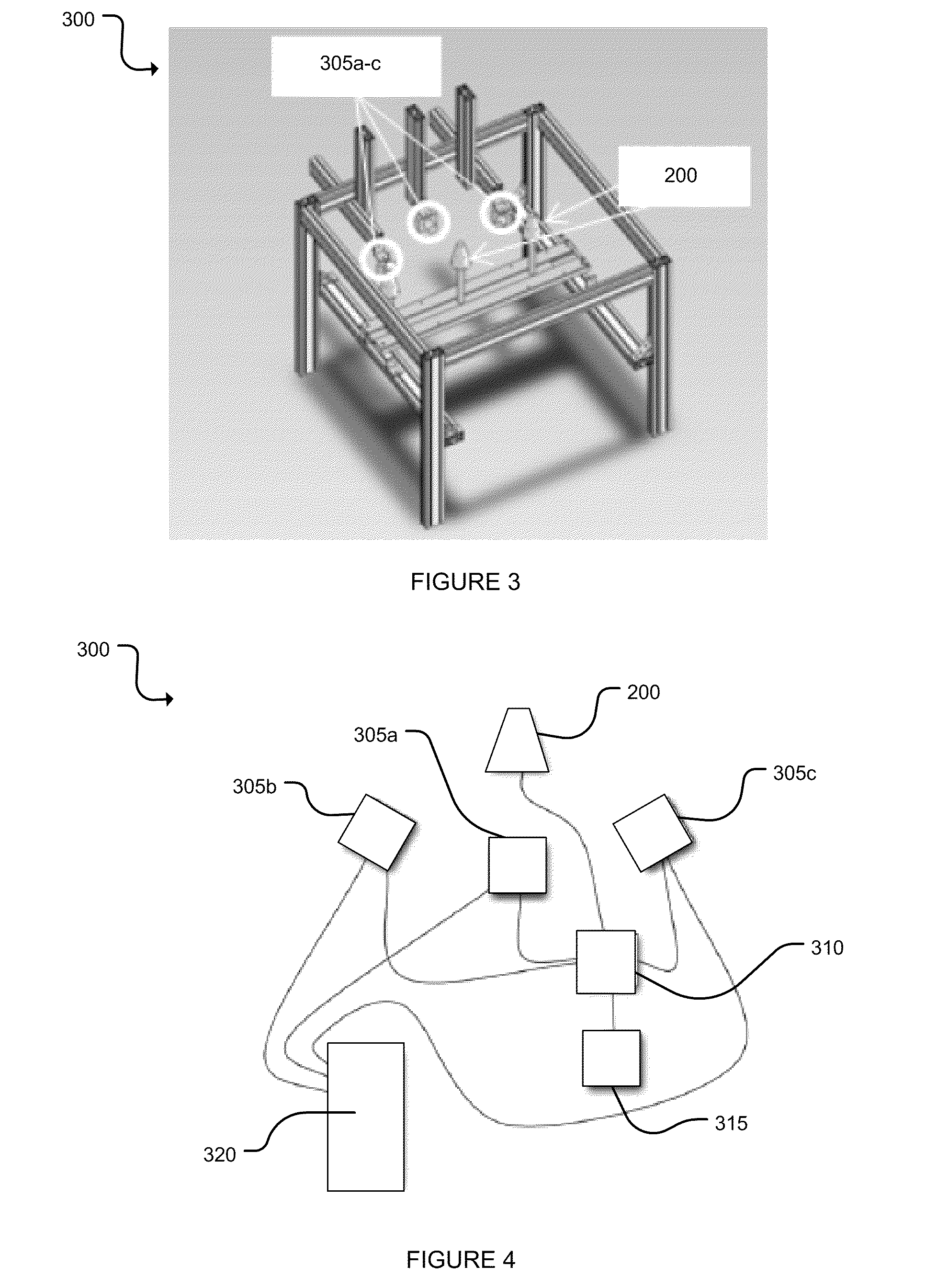Systems and methods for the detection of anatomical structures and positions thereof
a technology of anatomical structure and detection method, applied in the field of systems and methods for the detection of anatomical structure and anatomical position, can solve the problems of affecting the quality of anatomical structure,
- Summary
- Abstract
- Description
- Claims
- Application Information
AI Technical Summary
Benefits of technology
Problems solved by technology
Method used
Image
Examples
example 1
Proactive Detection of Bones in Poultry Processing
[0073]In this example, inspection is conducted on the cone line during the deboning steps close to the critical operations to allow for the ability to take action once a problem in the deboning process is detected. In deboning poultry, one critical step is the removal of the breast meat (sometimes referred to as the butterfly). In this example, bone inspection is performed as part of the deboning process. This would be accomplished by examining the carcass on the cone. One step in the process of preventing foreign material contamination is that of source control. This could be considered an application of a source control strategy where you attempt to control or contain the foreign material before it reaches the product.
[0074]In one embodiment, the technique works by using a plastic version of a cone. Plastic is an exemplary material for this example as it is transparent. However, one or ordinary skill in the art would readily realiz...
example 2
Detection of Cut Points on Front Halves by Using External Measurements
[0082]In order to obtain raw material for further processed products, deboning is a major operation in most poultry processing concerns. There are currently both manual and automated approaches to this problem but both techniques could use improvement in the eyes of most producers. A significant operation in the process is the wing cut and the ability to cut the joint tendons and ligaments that facilitate the pulling operation that removes the breast meat. This Example presents an approach for guiding the cutting operation that is capable of adjusting to each bird thereby improving the yield and efficiencies. In this Example, the approach is analyzed using data gathered from two populations of front halves to quantify the efficacy.
[0083]The approach used was to collect data on the points of interest on a front half. Using this approach, one is able to correlate external measurements on the bird carcass with the in...
example 3
Determination of Cutting Trajectory for Deboning
[0130]In this Example, a set of carcasses was used to determine the average splines that minimize the cutting error. In this Example, the upper regression analysis of the Example 2 was used with the new splines to understand how accurate one can predict the complete cutting trajectory based only on external measurements. Based upon the data generated in this example, the following conclusion can be drawn: (1) the cutting should start just above the top part of the clavicle tip; (2) the trajectory per chicken type is significantly better than an overall average trajectory; (3) two second order polynomials, one for the clavicle and one for the scapula, express the cutting trajectory more accurately than one higher order polynomial; (4) normalizing by WBX reduces the error; and (5) clavicle trajectory is better predicted using X as the independent variable, while for Y works better for the scapula.
[0131]In general, one trajectory spline h...
PUM
 Login to View More
Login to View More Abstract
Description
Claims
Application Information
 Login to View More
Login to View More - R&D
- Intellectual Property
- Life Sciences
- Materials
- Tech Scout
- Unparalleled Data Quality
- Higher Quality Content
- 60% Fewer Hallucinations
Browse by: Latest US Patents, China's latest patents, Technical Efficacy Thesaurus, Application Domain, Technology Topic, Popular Technical Reports.
© 2025 PatSnap. All rights reserved.Legal|Privacy policy|Modern Slavery Act Transparency Statement|Sitemap|About US| Contact US: help@patsnap.com



